What's a Sailboat With Two Hulls Called? (3 Examples)
A sailboat with two hulls offers several advantages over traditional monohull sailboats, including greater stability, speed, and space. If you want to learn more about the types and key features of two-hulled sailboats, we'll give you three distinct examples and help you decide which one fits your needs.
A sailboat with two parallel hulls is known as a catamaran. The hulls are connected by a deck, which provides a wide and stable platform, allowing them to sail faster and more efficiently than monohulls. Some of the most common catamaran types include cruising catamarans, racing catamarans, and power catamarans.
Aside from a catamaran, there are other types of two-hulled sailboats, such as the proa and the Polynesian double canoe. Let's see how they differ from a catamaran and what their use or purpose is.
Summary
- Catamarans are proven safer than traditional sailboats with a single hull, and they are less likely to tip over.
- Catamarans typically have two sails, one on each mast, which are larger and more efficient than those found on traditional sailboats.
- Catamarans have a shallower draft which allows them to access shallow anchorages and navigate in areas where traditional sailboats cannot.
- Power catamarans provide the stability and space of a catamaran with the speed and convenience of a motorboat.
- The proa is a two-hulled sailboat with asymmetric hulls that only sails in one direction and has a minimalist design.
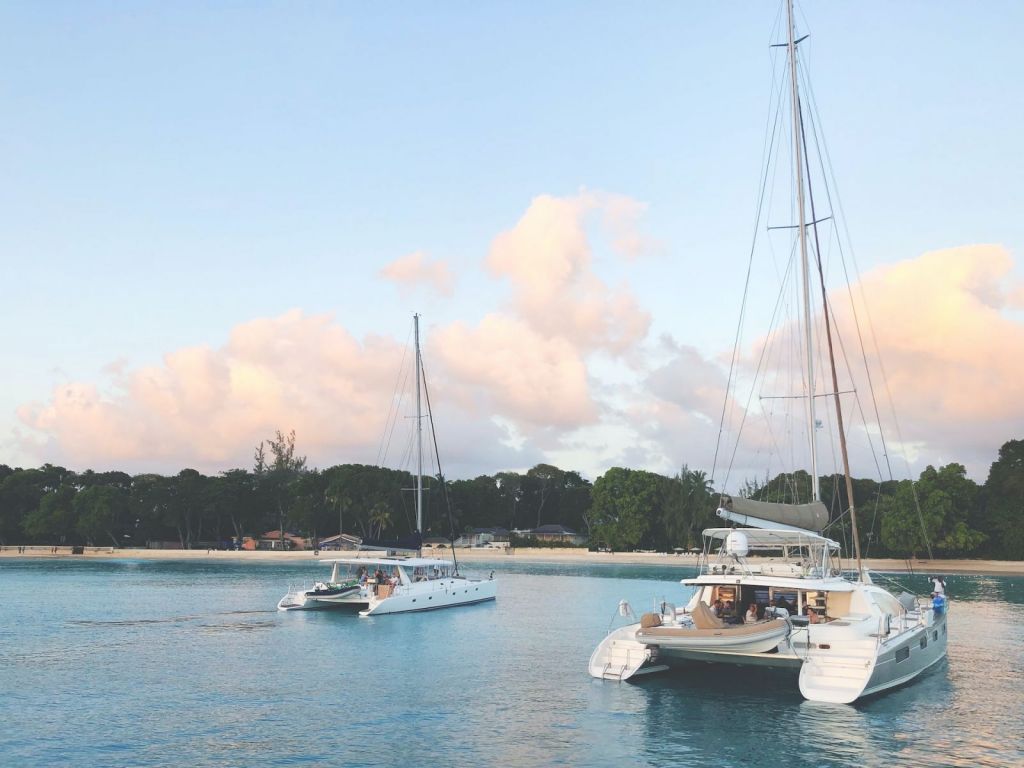
On this page:
The Two-Hulled Sailboat: Catamaran
A sailboat with two hulls is popularly known as a catamaran. Catamarans are a popular choice for sailing enthusiasts due to their stability, speed, and comfort compared to monohulls, especially in rough seas.
The table below summarizes how you can identify a catamaran based on the presence and number of each part:
| Boat Parts | How to Identify a Catamaran |
|---|---|
| Hull | Two hulls connected by a deck |
| Sail | Two sails (mainsail and jib), spinnaker (optional) |
| Mast | Two masts, typically near the center of each hull |
| Rudder | Two rudders, one on each hull |
| Daggerboard | Two daggerboards, one in each hull |
| Draft | Shallow draft |
They have two hulls
Unlike traditional sailboats that have a single hull, a multihulled boat such as a catamaran is considered to have one of the most stable hull designs. This allows them to sail faster and more efficiently than traditional sailboats. They are also less likely to tip over, making them a safer option for inexperienced sailors.
The two hulls also provide a wider base which reduces the rolling motion that can cause seasickness. Additionally, they allow for more living space on the boat, making them suitable for long-term cruising and living aboard.
If you're curious if a catamaran can still capsize despite having two hulls, here's an article to answer your question.
The hulls can be made of various materials, including fiberglass, aluminum, and wood. Fiberglass is a popular option due to its durability, strength, and ease of maintenance.
Meanwhile, the aluminum's strength and resistance to corrosion can make it ideal for sailing in saltwater environments. Wood is a traditional material used for boat building and can provide a classic look to a catamaran, but it requires more maintenance than other materials and can be more susceptible to rot and damage.
Other materials that can be used for catamaran hulls include carbon fiber, Kevlar, and composites. These materials are lightweight and strong, so they are ideal for racing catamarans that require speed and agility.
They have two sails
Catamarans typically have two sails, one on each mast. The sails can be adjusted to catch the wind and propel the boat forward. They can sail faster than traditional sailboats due to their lightweight design and ability to catch more wind.
The sails are typically larger and more efficient than those found on traditional sailboats. This is because catamarans have a wider beam, which allows for a greater sail area without compromising stability.
The two sails on a catamaran are usually a mainsail and a jib. The mainsail is attached to the mast on the back of the boat, while the jib is attached to the mast on the front of the boat.
If you want to be familiar with the different types of sail, here's a full guide with illustrations.
The mainsail is the larger of the two sails and is responsible for most of the boat's propulsion. The jib is smaller and is used to help steer the boat and balance the sail plan.
Catamarans also have the ability to use a spinnaker sail. This is a large, lightweight sail that is flown from a pole at the front of the boat. The spinnaker is used when sailing downwind and can significantly increase the boat's speed.
Most catamarans have two masts
Most catamarans have two masts, one on each hull. The masts are typically placed near the center of each hull, which helps to distribute the weight of the sails evenly across the boat.
Some catamarans have tall, slender masts that are designed for speed and efficiency, while others have shorter, sturdier masts that are better suited for heavy winds and rough seas.
Aluminum is a common choice for catamaran masts because it is lightweight, strong, and relatively inexpensive. Carbon fiber, on the other hand, is a more expensive option that offers superior strength and stiffness, making it ideal for high-performance racing catamarans.
They have two rudders and two daggerboards
Catamarans typically have two rudders, one on each hull, that are used to steer the boat. These rudders are located at the stern of each hull and are controlled by a steering system that allows the helmsman to turn the boat left or right.
Some catamarans also have daggerboards, which are retractable keels that help the boat sail upwind. They are used to provide lateral resistance to the boat and prevent it from sliding sideways.
Read this article to find out the pros and cons of a daggerboard keel type.
They usually have two daggerboards, one in each hull, that can be raised or lowered as needed. A catamaran's daggerboard is usually made of a lightweight, high-strength material like carbon fiber.
Some catamarans use a combination of keels and daggerboards, with one or more fixed keels and one or more retractable daggerboards. This allows the boat to have the stability and resistance to leeway provided by the fixed keels, while also having the maneuverability and adjustability of the daggerboards.
Catamarans have a shallow draft
In general, catamarans have a shallower draft than monohull sailboats, which allows them to access shallow anchorages and navigate in areas where traditional sailboats cannot.
The draft of a catamaran with a daggerboard keel can vary depending on the position of the daggerboard. When the daggerboard is fully extended, it can increase the draft of the boat, while when it is fully retracted, it can reduce the draft. This allows sailors to adjust the draft of the boat depending on the conditions and the depth of the water.
Smaller catamarans designed for day sailing or coastal cruising may have a draft of only a few inches, while larger catamarans designed for ocean crossings may have a draft of several feet.
Read this article to find out the advantages and disadvantages of sailing a catamaran if you're planning to sail one.
3 Common Types Of Catamarans
Below is a table showing the different types of catamaran and their use and key features:
| Type of Catamaran | Purpose | Key Features | Example Sailboat Models |
|---|---|---|---|
| Cruising catamaran | Leisurely sailing and living aboard | Spacious interior, comfortable amenities, storage space, stability, and ease of handling | Lagoon 42, Leopard 45, Fountaine Pajot Astrea 42, Bali 4.3 MY, Nautitech 40 Open |
| Racing catamaran | Competitive sailing | Streamlined design, high-tech materials, adjustable rigging, and specialized sails | GC32, Nacra 20 Carbon, Phantom F18, DNA F1x, SL33 |
| Power catamaran | Powerboating and cruising | Twin engines for speed and maneuverability, spacious deck area, comfortable amenities, and fuel efficiency | Aquila 36, Leopard 43 PC, Fountaine Pajot MY 44, Lagoon 630 MY, Sunreef Supreme 68 Power |
Cruising catamarans offer ultimate comfort for sailors
Cruising catamarans are designed for long-distance voyages and are popular among live-aboard sailors. These catamarans typically have spacious interiors with multiple cabins, a galley, and plenty of storage space. They also have a shallow draft, which allows them to navigate in shallow waters and anchor closer to shore.
If you're looking for the best liveaboard catamarans, here are a few top picks.
In addition to their spacious interiors and shallow draft, cruising catamarans also offer a stable and comfortable ride. The two hulls of the catamaran provide a wide beam, which makes them less likely to tip over and more resistant to waves and choppy waters. This stability also makes them a great option for families with children or for those who are prone to seasickness.
Cruising catamarans are also known for their speed and efficiency. The twin hulls reduce drag and allow for faster sailing speeds, while the large sail area provides plenty of power. This makes them ideal for long-distance voyages where speed and efficiency are important.
Racing catamarans are designed for speed and agility
Racing catamarans are specifically designed for speed and agility on the water. They are typically smaller and lighter than cruising catamarans, which makes them more maneuverable and faster in the water.
The hull shape of racing catamarans is also more streamlined, which reduces drag and allows them to cut through the water with less resistance. They also have a larger sail area which allows them to catch more wind and generate more power, which translates into greater speed on the water.
Racing catamarans are also typically equipped with high-performance sails, which are designed to be more responsive and efficient than those found on cruising catamarans. While they are best suited for open water and moderate to high winds, they may not be as stable in rough or choppy water conditions.
Power catamarans are designed for speed and efficiency
Power catamarans are designed for those who want the stability and space of a catamaran but prefer the speed and convenience of a motorboat.
Power catamarans are equipped with engines that provide propulsion, rather than relying on the wind to move them through the water. Their powerful engines can reach speeds of up to 30 knots.
Because they have two hulls, power catamarans are more stable in the water than traditional monohull powerboats. They also have a wider beam, which provides more space and stability on board.
The dual hull design reduces drag and allows them to move through the water more efficiently than monohull powerboats. This means that they can reach higher speeds with less fuel consumption, which makes them a popular choice for long-distance cruising or offshore fishing.
In terms of size, power catamarans can range from small, trailerable models to larger, luxury yachts. They are often equipped with modern amenities, such as air conditioning, generators, and entertainment systems, which make them comfortable for extended periods of time on the water.
Other Types Of Two-Hulled Sailboats
The table below shows the two other types of two-hulled sailboats aside from catamarans:
| Boat Type | Design | Sailing Direction | Hull Configuration |
|---|---|---|---|
| Proa | Two hulls of different sizes connected by a frame, angled mast, minimalist design | Unidirectional, with outrigger hull always leading | Asymmetric, with main hull longer and narrower than outrigger hull |
| Polynesian Double Canoe | Two hulls of equal size connected by a platform or deck, crab claw sail | Bidirectional | Symmetric, with two hulls of equal size |
| Catamaran | Two hulls of equal size connected by a platform or deck, multiple sails, spacious design | Bidirectional | Symmetric, with two hulls of equal size |
Proa is a two-hulled sailboat
Proa sailboats, also known as outrigger canoes, are a type of boat that originated in the Pacific Islands. They have two hulls, with the main hull being longer and narrower than the smaller outrigger hull.
The proa sailboat has several distinctive characteristics that set it apart from a catamaran:
-
They have asymmetric hulls: The proa has two hulls of different sizes, with the main hull being longer and narrower than the outrigger hull. This asymmetry allows for efficient sailing in both directions.
-
They can only do unidirectional sailing: The proa is designed to sail in one direction only, with the outrigger hull always leading. This is in contrast to catamarans, which can sail in either direction.
-
They are mounted on an angled mast: The sail on a proa is mounted on an angled mast, which allows for efficient sailing in a wide range of wind conditions.
-
They have a simple design: Minimalist design: Proas are often designed with a minimalist approach, using simple materials and construction techniques to create a lightweight and efficient boat.
In contrast, catamarans have two hulls of equal size and are designed to sail in either direction. They typically have more complex rigging and sail arrangements and are often larger and more spacious than proas.
In some Pacific Island cultures, proa sailboats were used for fishing and transportation, while in others they were used for racing and sport. Today, proa sailboats are still used for a variety of purposes, including recreation, racing, and exploration.
In terms of structure and design, proa sailboats are typically made from wood or other natural materials and are often decorated with intricate carvings and designs. They can range in size from small, single-person boats to larger vessels capable of carrying multiple passengers and cargo.
The Polynesian double canoe is another twin-hulled sailboat
The Polynesian double canoe is another type of boat that originated in the Pacific Islands and is still used today. It is a large canoe that consists of two hulls connected by a platform or deck. The two hulls are typically of equal size, and the deck is usually made of wood or other natural materials.
The Polynesian double canoe was traditionally used for long-distance ocean voyages and was an important means of transportation and exploration for the Polynesian people. The design of the canoe allowed it to be easily maneuvered through the water, and it was able to handle a variety of wind and sea conditions.
One of the unique features of the Polynesian double canoe is the use of a crab claw sail, which is a triangular sail that is mounted at an angle to the mast. This type of sail is highly efficient and allows the canoe to sail close to the wind, making it well-suited for long-distance ocean voyages.
In addition to transportation and exploration, these canoes have also been used for fishing, trading, and warfare. Today, the Polynesian double canoe is still used in some Pacific Island cultures for traditional ceremonies and celebrations, as well as for recreation and sport.
Did you find the answer to your specific question?
👍 0 👎 0
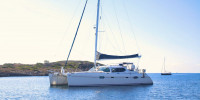
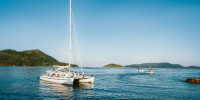
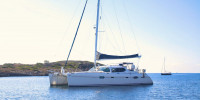
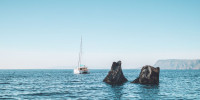
Leave a comment